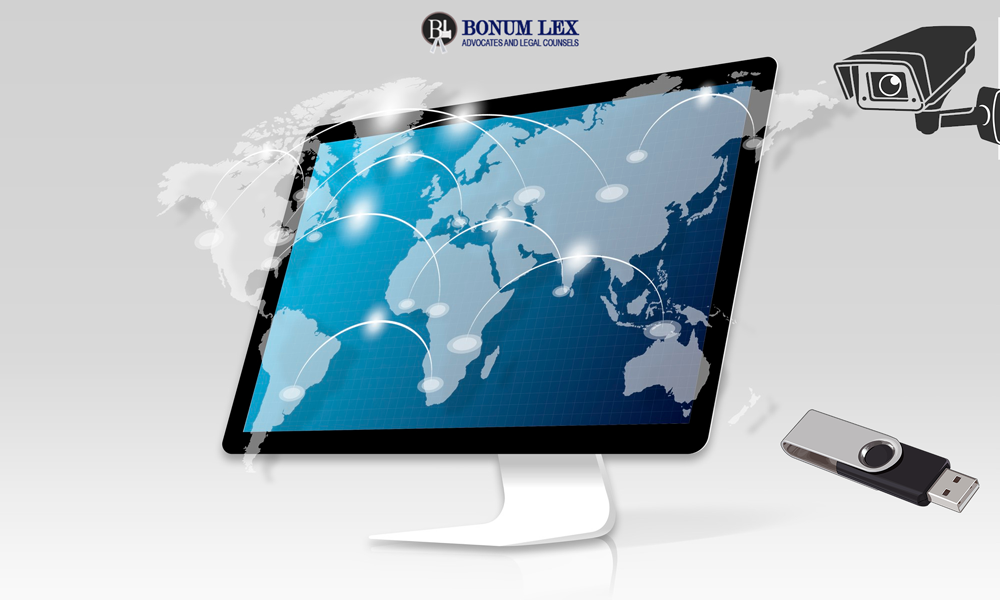Admissibility of Electronic Evidence in the Courtroom:
The hike of technology from wall clocks to wrist smart watchis quite remarkable. Not only India, but the entire world, was enthralled by the technological breakthrough of the twenty-first century. The jurisprudence of reliance on electronic evidence is evolving as a result of ongoing technical innovation and dynamic transformation of associated regulations is also taking place around the world. Laptops, Mobiles and Wearable Devices etc. with voice recorders and cameras are being generally used and the recordings are being examined by courts all around the world. The data obtained from these devices is being utilised by investigators and the legal community to investigate, verify or to prove or disprove disputed facts in situations involving personal harm, intoxication, murder, rape, and so on.
Section 65B of the Indian Evidence Act establishes a separatecriteriafor the acceptability of electronic evidence in the courtroom. Several proceedings have been filed challenging the scope and application of section 65B, with the Supreme Court. In Arjun Khotkar v. Kailash Goratyal, the Supreme Court provided the clear interpretation of Section 65B in its true reasoning. Section 65B(2) lays out the standards that must be followed for material to be classed as a “computer output.” If the conditions are met, “any information embedded in an electronic record that has been stored, recorded, or copied as a computer output is assumed to be a ‘document’ and admissible as evidence without further verification or submission of the originals.”
Section 65B(4), which provides that if electronic evidence is to be utilised in any court process, a certificate must be provided that identifies the electronic record and specifies the instrument used to create the electronic record, has sparked debate. This certificate must be signed by someone in charge of the relevant acts or someone with a competent official position in connection with the operation of the relevant device. This signature will be used to verify the validity of the certificate. According to Section 65B (4), the contents of the certificate must be expressed “to the best of the person’s knowledge and belief”. It’s also worth noting that Sections 62 and 63 apply at this point. The phrase ‘primary evidence’ is defined in Section 62, and it refers to the original document that is submitted to the Court. Secondary evidence, as defined by Section 63, comprises copies created from the original, certified copies, and oral accounts of the contents of a document, among other things.
When the original electronic record is produced, the production of a certificate is not required. If the owner of the device enters the witness box and establishes that the device on which the information relating to the case was first saved is his, the original electronic record can be taken as evidence right away.If the owner tries to bring such a network or system; however it is not convenient for him to do so.Then, in that situation secondary copies, along with the certificate is required as per Section 65B. In the Shafhi Mohammad case, the SC concluded that the requirement to produce a certificate under section 65B(4) is not mandatory. It further implies that a party who does not own the device if produces the document generated from that device, he cannot be forced to get a certificate under section 65B (4).
Moving to the situation where competent person refuses to issue or sign a certificate, then in that case, party relying on that evidence for the arguments can ask the court for an order requiring the production of the necessary certificates. Based on this basis, the Court determined that Section 65B(4) imposes a statutory, not voluntary, obligation that must be met before secondary copies of an electronic record can be admitted. The electronic evidence should indeed be produced before the case goes to trial, and the Court can also mandate the certificate’s production under Section 65B at any point during the trial.
We all know that evidence is critical to a successful case and trial as it is the important factor which generally proves a person’s guilt or innocence. As a result, it is critical to prove the authenticity and relevancy of the electronic evidence According to an initiative announced by the Ministry of Electronics and Information Technology (MeitY), it would provide support to the prosecutor and investigators as needed for the appointment of specialists for electronic evidence. In addition, Section 79A of the Information Technology Act allows the Central Government to designate any Central/State government agency or department as an Examiner of Electronic Evidence to provide expert opinion on e-evidence before any court or other authority. However, the initiative could not be implemented properly.
The untapped and growing potential of using electronic devices and evidence in court cannot be overlooked and therefore, caution need to be exercised about the admissibility of this type of evidence as its use in people’s daily lives is increasing. Because it is a non-traditional kind of evidence, the standard of proof for its validity and correctness must be higher than for regular documentary evidence. Because innovation outpaces the existing legal framework, we should set our laws ahead of time to avoid a legislative void on the subject.


Recent Comments